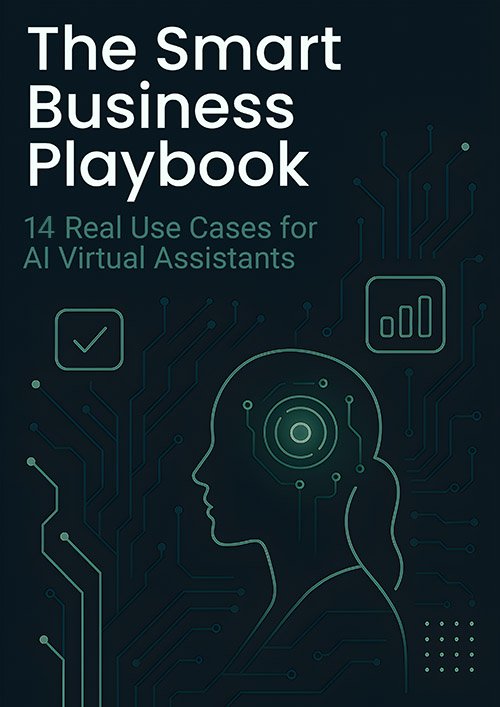When you join a new organization, you'll receive an extensive benefits package during onboarding that typically includes health insurance, retirement plans, and paid time off. You'll learn about wellness programs, mental health support, and 401(k) matching options that can maximize your financial security. Work-life balance initiatives and professional development opportunities are also key components. Understanding these benefits is vital for your long-term success, with many more advantages to explore.
Key Takeaways
- Employee benefits during onboarding include comprehensive health insurance, mental health support, and wellness programs available from day one.
- Retirement planning benefits feature 401(k) matching options, typically 50-100% of contributions up to 4.5% of salary.
- Work-life balance initiatives, including flexible work arrangements, reduce stress levels and increase employee satisfaction by 50%.
- Professional development opportunities and mentorship programs increase new hire productivity by 62% and boost engagement levels.
- Legal documentation and compliance requirements ensure proper enrollment in benefits programs and protect both employee and organizational interests.
Core Benefits Package Overview

A robust core benefits package serves as the cornerstone of employee satisfaction and retention in today's competitive job market.
You'll find that extensive benefits typically include health insurance, retirement plans, and paid time off – elements that directly impact your ability to attract and retain top talent.
When you invest in a strong core benefits package, you're making a strategic decision that can boost employee retention by up to 20%.
While the average investment of $11,000 per employee annually may seem substantial, it's worth noting that 60% of employees would accept lower salaries in exchange for better benefits.
This investment translates into measurable outcomes, including a 25% increase in employee engagement and enhanced productivity.
Your extensive benefits strategy directly influences workplace satisfaction and long-term organizational success. Additionally, effective onboarding enhances employee retention by 82% and productivity by 70%.
Healthcare and Wellness Programs
You'll find extensive mental health support through our Employee Assistance Program, which includes confidential counseling services and work-life resources available from day one.
Your physical wellness plan coverage encompasses fitness center reimbursements, nutrition counseling, and specialized programs for chronic condition management.
Mental Health Support Options
While starting a new job can be overwhelming, thorough mental health support options have become an integral part of modern employee benefits packages.
During employee onboarding, you'll find that 79% of workers value mental health benefits as a key factor in job satisfaction. Your access to Employee Assistance Programs (EAPs) provides immediate resources to help manage work-related stress and anxiety.
Companies that implement wellness programs during onboarding see a 25% boost in employee engagement and reduced absenteeism.
You'll join the 60% of employees who feel more connected to their organization when receiving mental health support, leading to higher retention rates.
These resources demonstrate your employer's commitment to employee well-being, with half of all workers reporting that such benefits make them feel valued and supported.
Physical Wellness Plan Coverage
The robust physical wellness plans offered during onboarding provide extensive healthcare coverage and preventive care services essential for maintaining your well-being.
| Wellness Component | Impact on Employees |
|---|---|
| Preventive Care | Early detection of health issues |
| Mental Health Support | 20% reduction in change stress |
| Healthcare Coverage | 25% decrease in absenteeism |
| Wellness Programs | 35% increase in engagement |
Your physical wellness plan integrates thorough employee benefits that support both physical and mental well-being. These benefits markedly influence job satisfaction, with 70% of employees citing health and wellness programs as vital retention factors. You'll have access to preventive care services, including regular medical screenings and check-ups, enabling proactive health management. The extensive approach to employee wellness demonstrates your organization's commitment to supporting your health journey while fostering increased employee engagement and reduced absenteeism.
Preventive Care Incentive Programs
Building on the foundation of physical wellness coverage, preventive care incentive programs offer compelling rewards for taking proactive steps toward better health.
You'll find financial incentives like reduced premiums and gift cards when you participate in wellness programs focused on preventive care. These initiatives help reduce healthcare costs while boosting employee engagement and overall workplace productivity.
- Schedule regular health screenings to earn rewards and maintain your wellbeing
- Participate in wellness activities to reduce your healthcare premiums
- Track your preventive care progress through your employer's wellness portal
- Engage in health promotion programs to boost job satisfaction
Retirement Planning and Financial Security
You'll find extensive 401(k) matching options that align with your financial goals and help maximize your retirement savings through our company-sponsored plan.
Our benefits team will guide you through establishing your long-term financial strategy, including selecting investment options and determining contribution levels that best suit your needs.
Your path to financial security starts with understanding these retirement benefits, which you can begin implementing immediately to take full advantage of the company match program.
401(k) Matching Options Available
While planning for retirement may seem intimidating, understanding your employer's 401(k) matching options can greatly boost your long-term financial security.
You'll find that most employers offer matching contributions ranging from 50% to 100% of your contributions, typically up to 4.5% of your salary. This valuable employee benefit enhances both job satisfaction and employee retention while securing your financial future.
- Assess your employer's specific matching formula to maximize your retirement plans
- Calculate the potential impact of matching contributions on your long-term savings
- Review your contribution levels to guarantee you're not leaving free money on the table
- Monitor your retirement account regularly to track your progress toward financial goals
Take advantage of these matching options to potentially increase your retirement savings by thousands of dollars over your career.
Building Long-Term Financial Plans
As you begin your employment journey, establishing a robust long-term financial plan is essential for securing your future prosperity. During the onboarding process, you'll discover extensive benefits that include retirement planning tools and financial education resources designed to boost your savings potential by up to 15% through employer matching programs.
Taking advantage of these employee benefits early can increase your retirement preparedness by 71%. You'll receive guidance on creating sustainable financial strategies, with organizations reporting 50% higher engagement levels among employees who participate in retirement planning programs.
These initiatives not only support your long-term financial planning goals but also demonstrate your employer's commitment to your future, contributing to reduced turnover rates and increased job satisfaction. Maximize these opportunities by actively engaging with the retirement planning resources provided during onboarding.
Work-Life Balance Benefits

Organizations that prioritize work-life balance during onboarding create a foundation for long-term employee success and retention.
You'll find that companies implementing flexible work arrangements during the onboarding process experience up to 50% higher employee satisfaction rates and a 23% boost in employee productivity.
By addressing work-life balance early, you can reduce stress levels by 30% and decrease turnover rates by 20% in the first year.
Early emphasis on work-life balance leads to measurably lower stress and higher retention among first-year employees.
- Learn about flexible scheduling options and remote work policies
- Review company wellness programs and health initiatives
- Understand leave policies, including vacation and personal time
- Access resources for managing work-life integration
With 87% of employees prioritizing work-life balance benefits, incorporating these elements into your onboarding process guarantees stronger employee engagement and creates a more sustainable work environment. Additionally, clearly defined performance goals during onboarding can lead to a 70% increase in satisfaction.
Professional Development Opportunities
Since investing in employee growth directly impacts organizational success, professional development opportunities must be clearly communicated during onboarding.
You'll find that structured onboarding programs that emphasize career advancement can reduce turnover rates by up to 50% while increasing productivity by 62% among new hires.
When you provide mentorship and training resources from day one, you'll see 20-40% higher employee engagement levels.
Your new hires feel more invested when they understand their growth trajectory, with 70% reporting increased commitment when clear development paths exist.
Through professional development opportunities, you can identify skills gaps early and implement targeted training initiatives.
This proactive approach guarantees your employees develop the capabilities needed to contribute effectively while fostering long-term commitment to your organization. Additionally, implementing effective mentorship programs can further enhance job satisfaction and improve retention rates.
Legal Compliance and Documentation Requirements

While establishing an effective onboarding program is essential, ensuring legal compliance and proper documentation remains your top priority.
You'll need to maintain extensive records to protect your organization from liability and demonstrate adherence to regulatory requirements. Your onboarding process must include proper handling of employee agreements and workplace policies.
- Complete mandatory documentation including tax forms, direct deposit information, and benefits enrollment paperwork.
- Provide written information about employee rights, responsibilities, and labor law compliance.
- Secure signed agreements for non-disclosure and non-compete clauses.
- Maintain accurate training records to meet OSHA and safety requirements. Additionally, ensure that all documentation is stored in a secure manner to protect confidentiality agreements and sensitive employee information.
Remember that failing to meet documentation requirements can result in significant penalties and legal issues.
Frequently Asked Questions
Do You Usually Get Paid for Onboarding?
You'll typically receive paid onboarding as part of your employee compensation. Most companies include orientation pay during the onboarding process, with benefits eligibility and salary structure established during your training duration.
What Is the My Benefits Channel Onboarding?
You'll access your benefits overview through My Benefits Channel, a digital onboarding software that streamlines benefits enrollment, provides employee support, and enhances engagement while communicating your benefit options effectively.
What Are the Benefits of Orientation?
Like a compass guiding your journey, orientation advantages include increased employee retention, stronger company culture understanding, enhanced training effectiveness, improved performance, smoother team integration, and higher engagement through structured onboarding experiences.
What Is an Onboarding Checklist?
You'll use this extensive tool to track your new hire's onboarding process, ensuring completion of paperwork, training schedules, mentorship programs, and feedback mechanisms while promoting employee engagement and company culture understanding.


